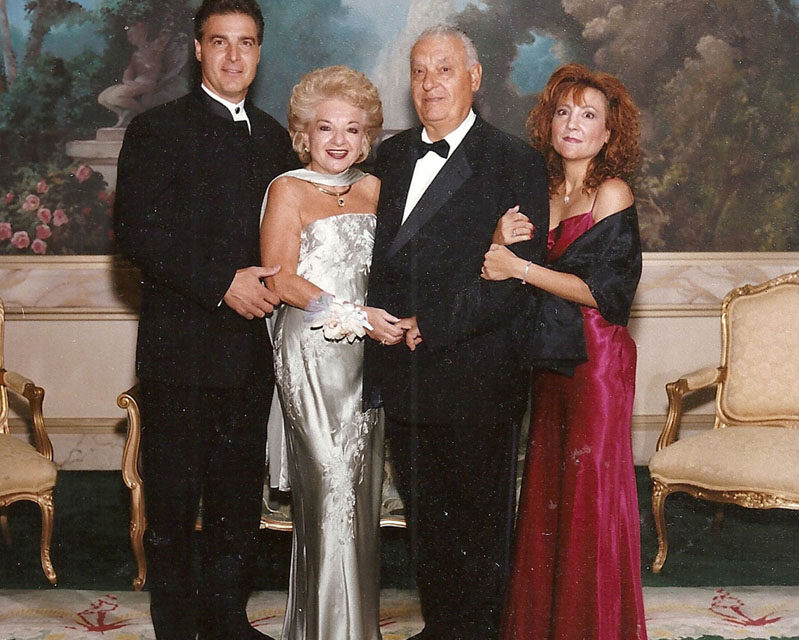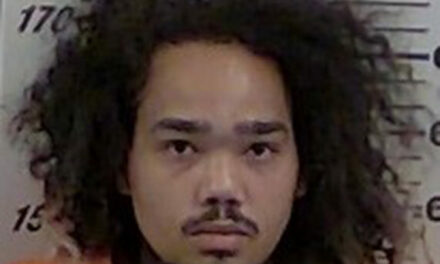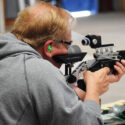Arlene Casale had never been to New Mexico when she landed at the Albuquerque Sunport and drove to Belen with her husband, Fiorello, in 1981. Arlene cried the whole way because she was convinced that Fiorello had taken her from her native New York City and dropped her in the middle of a far-off desert.
How could he have done such a thing?
Fast forward 39 years and Arlene and Fiorello are still in the middle of a “desert” but would never think of leaving it and moving back to New York or to any other place on earth.
In the intervening years they became New Mexicans, grew to love the Southwest and ran one of the most popular Italian restaurants in the entire state.
How did such a transformation take place? How did Fiorello Casale, an Italian immigrant who owned six enormously successful restaurants in New York, leave them all behind to start from scratch?
And how did Arlene Casale leave her family and the only city she had ever known? Theirs is an inspiring story, full of love and labor, with a few bumps and bruises experienced along the way.
In Italy
Fiorello Casale’s story began in Italy, where he was born on April 20, 1930. His father, Vincent, had migrated to the United States in 1912 when he was only 12, but had returned to Italy, married a young woman named Maria and began a family with one daughter and four sons, including Fiorello.
Fiorello’s family traveled to New York, but he remained in his native Italy and worked from an early age. He was living in his village of Ventosa, southeast of Rome, at the start of World War II. Unable to join his family in the United States, he faced years of horror under fascist rule.
German soldiers occupied the countryside, making extreme demands on local residents and finalizing plans to move many of them to concentration camps.
Fiorello and everyone in his village were overjoyed when American soldiers liberated Ventosa in May 1945. Fiorello never forgot the soldiers who came to his rescue and the soldiers never forgot the grateful people they encountered.
Two years after the war ended, Fiorello left Italy to join his family in New York City. Departing from Naples on a ship named the Marine Perch, he arrived in New York on June 21, 1947.
Fiorello was happy to see his family, but found New York City to be far too big and noisy for a boy who had been raised in rural Italy, even in the midst of World War II. Not able to sleep or relax in noisy Manhattan, Fiorello moved to a quieter part of New York called Flushing in the borough of Queens.
From the Army in El Paso to Italian restaurants in New York
Drafted during the Korean conflict, Fiorello joined his two older brothers in the U.S. military. The Army sent Fiorello to Ft. Bliss, Texas, where he learned to cook and managed to avoid duty on the front lines of Korea. He had more than enough of combat conditions in Italy.
On his weekends off, Fiorello sometimes drove up the Rio Grande Valley to visit an appealing little town called Belen. He liked Belen because its smallness, friendly people and mild climate reminded him of his native village in Italy.
After two years in the military, the Army offered Fiorello a promotion to the rank of sergeant if he reenlisted. The young cook did not hesitate. He refused the offer and headed home to New York in 1953.
Back in Flushing, Fiorello taught his brothers how to cook and opened his first New York restaurant the year he returned from Texas. The business did so well that he opened a second restaurant, located in Forest Hills, N.Y., in 1955.
Fiorello’s restaurants became famous for their full menus of Italian food, but especially for their pizzas. Customers came from near and far not only to eat Fiorello’s excellent pizzas, but also to watch him make them. Dozens at a time stood outside to watch him through a window as he expertly threw the pizza dough high into the air.
Customers lined up to enter his restaurants through the dinner hour and far into the evening. Fiorello had so much business that he needed as much as 400 pounds of flour to make his pizzas by hand each day. He remembers making between 2,200 and 2,500 pizzas a week.
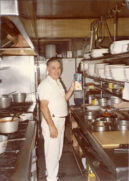
Fiorello Casale in the kitchen of one of his New York restaurants.
Along with his brothers, Fiorello owned as many as six New York restaurants at one time or another. In addition to cooking, Fiorello did the work of four men as he went from restaurant to restaurant.
Working as a troubleshooter, he helped fix electricity, plumbing, and ovens. He helped remodel restaurants long into the night.
Many celebrities ate at the Casales’ restaurants. The most famous included the singer Perry Como, the comedian Sid Caesar, the actor Robert Duvall and the New York Knicks basketball star Jerry Lucas.
Fiorello and his brothers were so successful that people continually urged them to expand their business to locations beyond the New York area, including Washington, D.C. But the Casales resisted, knowing that expanding so far away could mean losing control of the product they had become famous for. They insisted on quality, not quantity.
Courtship
Arlene Vertullo had been born in New York City in 1939. The grandchild of Italian grandparents who had immigrated to the United States in 1900, Arlene went to her grandparents’ apartment every day after school. It was in her grandparents’ home in Manhattan that she met a young immigrant that her family had befriended and encouraged as he slowly adjusted to life in the U.S. The young man’s name was Fiorello Casale.
Arlene got to know Fiorello better when she babysat for her aunt in Flushing and needed rides on Monday mornings so she could attend school in Manhattan. No one could say it was love at first sight. In fact, Arlene thought Fiorello was rather course and mean.
When he asked her out on a date to see a movie, she refused, saying that she had homework to do. Arlene’s mother and aunt finally convinced her to go out with Fiorello because he didn’t smoke, didn’t drink and didn’t womanize.
The couple dated, but Fiorello said he felt sorry for the man who would marry her, and Arlene said she felt sorry for the woman who would marry him. She planned a life in medicine, not as a wife and mother. Somehow they changed their minds about each other. They were married in a big wedding with 300-400 guests on Jan. 8, 1956. Little did Arlene know what adventures lay ahead.
Arriving in Belen
Fiorello and Arlene enjoyed their life together in New York. They had two children, Deborah, born in 1957; and Fiorello, Jr., (Fiore ) born a year and a half later.
But problems arose in the late 1970s and early 1980s. The restaurant business in New York suffered in what Fiorello calls the “Carter Misery” or economic trouble during Jimmy Carter’s term as president. More personally, Fiorello’s health began to suffer after years of overwork. He grew so ill that he could hardly walk.
Searching for a place to recover his health, Fiorello remembered the small town on the Rio Grande that he had liked so much while he was stationed at Fort Bliss. He had even bought some land east of Belen when a land salesman from the Horizon Corporation visited him in New York and convinced him that buying land in New Mexico was a wise investment.
Like thousands of Easterners, Fiorello bought his land sight-unseen. Only a few Easterners ever profited from their purchases and even fewer ever moved to the new community, now known as Rio Communities.
Despite Arlene’s first reaction when she arrived in New Mexico, the couple decided to settle in Rio Communities in 1981.
Although the Casales had decided to move to New Mexico, their friends and relatives in New York didn’t believe they would be gone for long. Many didn’t even know where New Mexico was; they were sure the Casales had moved to Mexico and shouldn’t drink the water. Many made bets about how long it would take for the family to return back East.
Opening Fiorello’s
Whoever bet that the Casales would not stay in New Mexico lost a lot of money. The family grew to like everything about their new home, especially the people they met.
Fiorello and Arlene felt comfortable among Eastern transplants like themselves, but learned that native New Mexicans had the “biggest hearts” and were “so loving,” in Arlene’s words. To this day, she says that the people made them stay, never to return for more than short visits to New York.
As soon as Fiorello’s health improved, he and Arlene began to look for a possible location for the Italian restaurant they hoped to open. They found the right place, a house at 921 E. River Road on the west side of the Rio Grande about half way between Rio Communities (with its largely Eastern transplants) and Belen (with its largely local population).
The house had been built by Gordon and Hannah McConnell. Gordon, a Santa Fe railroad conductor, had married Hannah, a Harvey Girl at the Belen Harvey House in 1937. They moved into their new house in 1950 and raised five children before deciding to sell their home and retire to Elephant Butte.
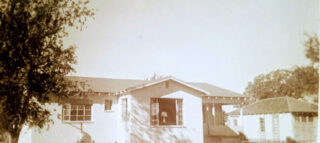
The McConnells’ home at 921 E. River Road that the Casales remodeled and expanded to become Fiorello’s Italian Restaurant.
Photo courtesy of Rosie Singleterry
The McConnell’s house had equaled less than a 1,000 feet. Using the remodeling, plumbing and electrical skills that Fiorello had learned in his New York restaurants, the Casales expanded the house to 3,500 sq. ft. and converted it into a restaurant that sat 150 customers at a time.
Arlene designed the interior, using gold leaf on the restaurant’s doors where she could welcome her many customers.
Fiorello purchased the best modern equipment for his new kitchen operation. He even imported a machine from Italy to make pasta. He ordered all fresh food from Nobels in Albuquerque, and he brought all his best recipes from his years in New York.
Arlene says people wanted to x-ray Fiorello’s brain to learn all the recipes he stored in his mind.
Known as Fiorello’s, the Casale family’s restaurant opened in September 1984. Their four-page menu offered authentic, homemade fresh pasta, sauce, garlic bread, eggplant parmigiana, lasagna, ravioli, fish and spinach pizza, their specialty. Ten-foot long submarine sandwiches were available for catered events.
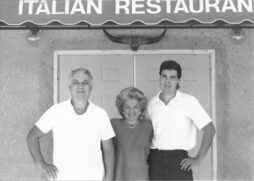
Fiorello Casale Sr., Arlene Casale and Fiorello Casale Jr., on the opening day of Fiorello’s Italian Restaurant in 1984.
Fiorello and Fiore did the cooking while Arlene greeted their customers and ran the dining room, making her own special green chile bruschetta (appetizer).
Using a special talent, Arlene remembered everyone by name. When a memory expert named Harry Lorane wrote a book, “Remembering People: The Key to Success,” he included Arlene as an example of a person whose success was largely based on her ability to remember her customers’ names.
Knowing how to work hard from their earliest days in New York, Fiorello and Arlene worked seven days a week. They still consider their years in their restaurant the best memories of their lives.
(Part 2 of “Fiorello’s” will appear in the April 16 edition of the News-Bulletin, just in time to help celebrate Fiorello’s 90th birthday on April 20.)
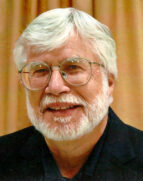
Richard Melzer
Biographer
(La Historia del Rio Abajo is a regular column about Valencia County history written by members of the Valencia County Historical Society since 1998.
Opinions expressed in this and all columns of La Historia del Rio Abajo are the author’s alone and not necessarily those of the Valencia County Historical Society or any other group or individual.)
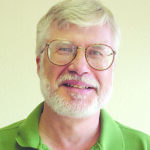
Richard Melzer, guest columnist
Richard Melzer, Ph.D., is a retired history professor who taught at The University of New Mexico–Valencia campus for more than 35 years. He has served on the board of directors of the Valencia County Historical Society for 30 years; he has served as the society’s president several times.
He has written many books and articles about New Mexico history, including many works on Valencia County, his favorite topic. His newest book, a biography of Casey Luna, was published in the spring of 2021.
Those interested in joining the Valencia County Historical Society should contact Dr. Melzer at [email protected].
